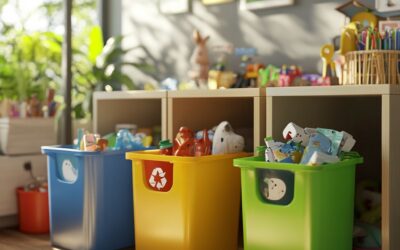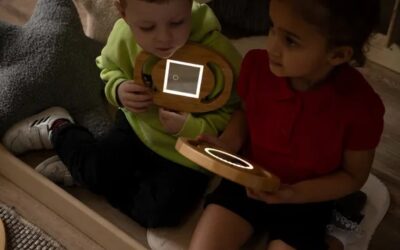The big freeze: Outdoor ice play ideas
Children love ice cube activities, or anything involving ice play. Outdoor learning activities like this one can open up so many opportunities for young children and will aid a wide range of skills in their development. This sensory experience can be completed in spring and summer with the added benefit of cooling down children, or if the weather is cold enough in winter, freezing items naturally in the outdoors. Ice play creates the perfect activity for pre-schoolers, and can be combined with nature art, painting and other play ideas suitable for outdoors.
With excellent links to Understanding the World in the EYFS, freezing and melting within this type of tactile play opens up plenty of language opportunities. Children can experiment with pouring warm water onto the ice or adding salt to find out the reaction. This will also enhance their fine motor skills and pre-writing skills too!
Frozen dinosaur eggs
Method: Blow up the balloon and stretch it out a little, allow to deflate. Pop the dinosaur inside the balloon and fill with water, ensuring any air is removed before tying. Place in the freezer overnight. Once frozen, remove the balloon from the ice and allow the children to explore. Provide a variety of tools to hatch the dinosaur, such as pipettes, hammers or brushes. Add warm water and salt in bowls too.
Frozen dinosaur eggs are great starting point for developing curiosity about the natural world for children. Allow the children’s interests to lead into discussions about where dinosaurs are now, fossils or even create names for your newly hatched dinos.
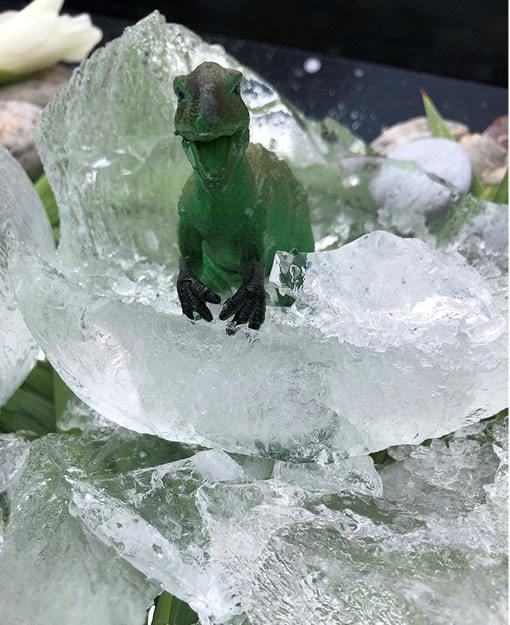
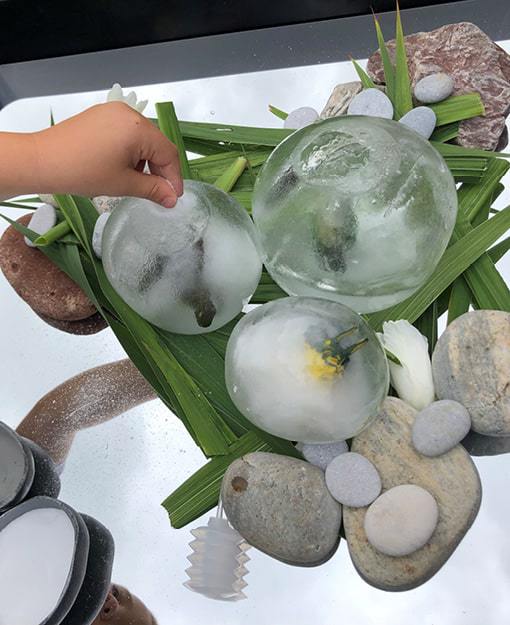
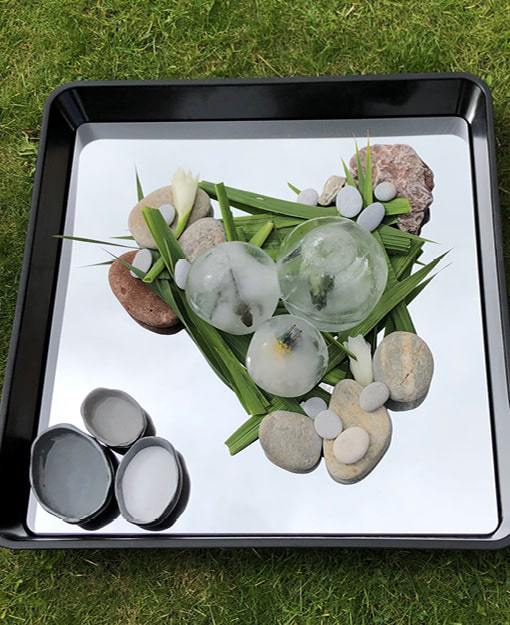
Frozen nature art
Exploring the outdoors is a natural way for children to connect with the world around them. Collect some nature and allow children to observe and interact as the ice melts around it.
You will need: Nature; such as flowers, leaves, conkers, pinecones etc… Scoops, bottles, ladles, containers.
Method: Place items of nature inside different sized containers and fill with water. Place in the freezer overnight and take out the next day.
If the ice blocks are difficult to remove, run warm water over for a few seconds. Place the frozen nature blocks into a large tray and add scoops, bottles or ladles. Allow the children to investigate how to melt the ice and discuss what is happening.
Once the ice has melted, the remaining water and nature makes perfect ‘nature soup’. This can be used for creating potions in bottles or pouring into bowls. Children will love pouring and filling with the mixture.
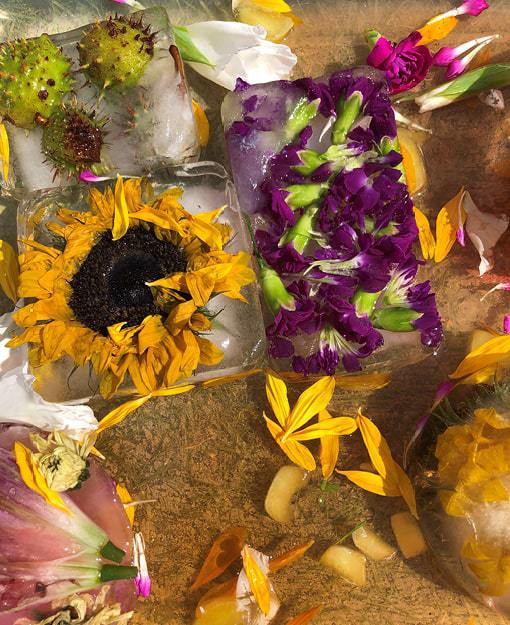
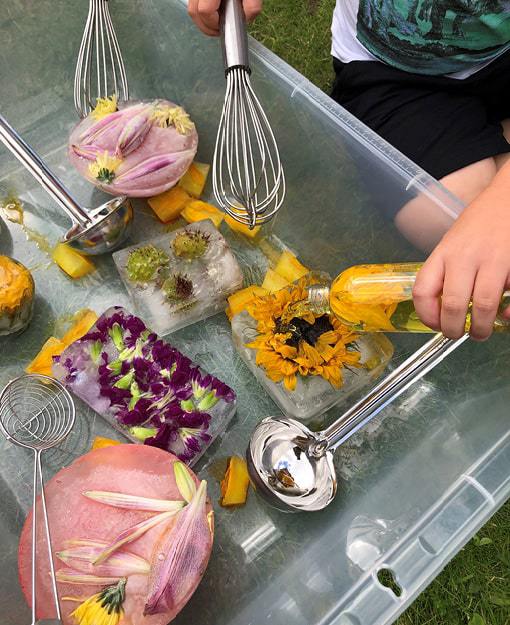
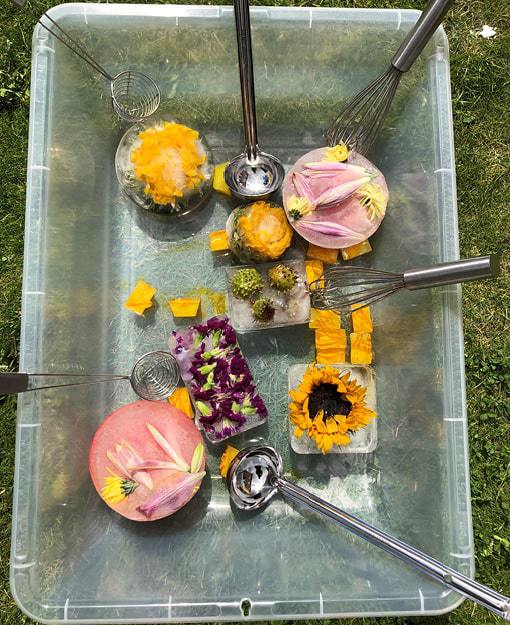
Ice painting
Provide children with a different medium to paint on. Ice blocks are perfect for experimenting with colour.
Method: Freeze water in containers and remove the next day. Provide children with paint and allow them to create their own masterpieces on the ice blocks. As the ice melts, children will be fascinated as their creation transforms.
By Katie from @earlyyearsoutdoor. Katie is an EYFS teacher and leader, who has taught in early years and key stage one for over twelve years. Her passion is outdoor learning and she loves to share her ideas on Instagram, inspiring others with nature-based play.
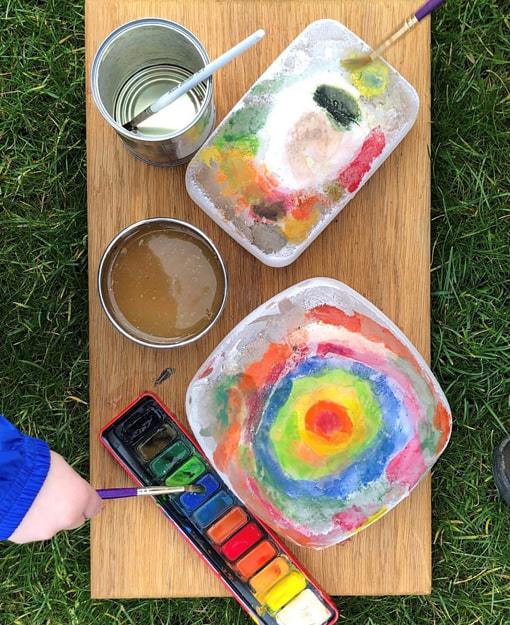

Talitha McLachlan
Writer for Hope Education
Talitha worked as a primary and secondary teacher for 9 years before turning her hand to writing. She is passionate about effective education of children and supporting teachers to do this. In her free time, Talitha enjoys sewing, films, and spending time with her two cats.
You can see more of Talitha’s writing here.
Related blogs
What Goes In, Must Go Out
Creating a Circular Economy in Your Nursery Author: Nick Corlett Sustainability Manager at LEYF Sustainability is more than a trend—it’s a shared responsibility, and the nursery is the perfect place to nurture these skills. Every day...
In The Dark
Author: Alice Sharp It’s vital that we remember that a three year old’s imagination is just beginning to really develop and they may fear things that aren’t real, such as monsters in the shadows or darkness. Their ability to imagine can make them more susceptible to...
Celebrating being part of a Global Community
Author: Alice Sharp As a young teacher I can remember how much time and effort went into looking at the SHAP Calender. This is a calendar of festivals around the world. We had to try and ensure we celebrated anything relevant but also introduce other festivals from...
